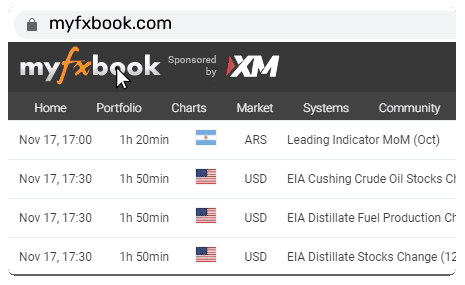UK Inflation
Finally, some better news…
UK CPI inflation fell by 0.4ppts to 10.1% y-o-y in January (consensus: 10.3%, BoE: 10.1%)…
…but the big – and better – news was that core inflation fell by 0.5ppts to 5.8% y-o-y, while services inflation was down 0.8ppts to 6.0%.
While impacted to some degree by changes to the weightings, this is finally some good news for the BoE (and UK consumers) to celebrate!
Facts
UK CPI inflation fell for the third consecutive month in January, to 10.1% from 10.5% y-o-y in December (chart 1).
This was an undershoot relative to consensus expectations of 10.3%, but in line with the BoE’s expectations of 10.1%. Core CPI inflation slowed from 6.3% to 5.8% (consensus: 6.2%). This was on the back of a 0.9% m-o-m fall, which is slightly bigger than the usual seasonal -0.8%. RPI inflation, however, was unchanged at 13.4% y-o-y in January (consensus: 13.2%).
This widened the wedge back to 3.3ppts, driven in part by the impact of mortgage interest payments (+5.9% m-o-m/45.6% y-o-y). Within CPI inflation, goods prices rose 13.3% y-o-y (down slightly from December’s 13.4%), while services price inflation, which the BoE has been highlighting as of particular interest from a monetary policy perspective, fell from 6.8% y-o-y to 6.0%.
Food and non-alcoholic beverage price inflation was little changed, at 16.7% y-o-y (down from December’s 16.8%). However, this was the first time in 18 months than the annual rate did not rise, and the m-o-m increase of 0.6% was the smallest since March 2022.
This data release also included the changed weightings for the consumer price basket to reflect the UK’s updated spending habits. The weight of goods in the basket was down from 56.3% to 53.7%, while correspondingly, the weight of services rose from 43.7% to 46.3%, led by a big rise in spending on hotels and restaurants (from 11.4% to 13.8%). In this release, that added to the downward pull, with inflation in that category falling from 11.3% y-o-y to 10.8%. These weights are only temporary, and will be finalised in next month’s release, but are unlikely to change significantly.
Implications
Part of the drop in the headline inflation rate reflects the weighting changes. The post-pandemic period has been marked by more spending on services and less on goods. With services inflation lower than goods inflation and in this release at least, falling faster, increasing its weighting has brought down the overall headline and core rates.But that does not change the fact that inflation in the services and core categories came down in January: the m-o-m falls in core and services inflation were larger than usual, and that has nothing to do with the weightings.
For the BoE, the headline rate of 10.1% will be no surprise. We don’t know what it was forecasting for core and services inflation, but we do know it highlighted the latter as a concern in the February minutes. So it will be relieved to see this fall in the January data. This is not the last inflation release the MPC will see before it votes on interest rates in March.
The meeting is on the 23rd of that month, meaning policymakers will have a whole month’s worth of new data (including the labour market on the 14th and inflation on the 22nd). The Bank emphasises its data dependency, so those new pieces of information will be crucial. Few days ago I said that the BoE would want to see hard evidence of pressures receding – not just the early signs like rising vacancies, falling inflation expectations and surveys suggesting receding pay pressures. This is the first such piece of evidence. One swallow does not make a summer, and yesterday’s labour market news points to continues pressures emanating from pay. Moreover, chart 1 is a reminder that these falls are just the beginning: inflation remains way higher than normal, and way higher than wage growth (5.9% in December). But this does feel like, finally, something to celebrate.
UK Inflation Data Endorses BOE Forecast USD: Still eyes on Data
There were no fireworks in the FX market as January’s CPI figures matched expectations. Evidence of a slowdown in the disinflation process is giving an opportunity to the Federal Reserve and markets to feel more comfortable about more tightening beyond March. Fed Funds futures are now pricing in 68bp of extra hikes, having added around 7bp in price after the inflation release. This has, however, failed to translate into a materially stronger dollar for now, which is largely a consequence of some resilience in global risk sentiment despite the reinforcing of hawkish Fed bets. I think data will remain the key driver for the dollar and the global risk environment, as the depth of the US economic slowdown is still a key driver of rate expectations, especially when it comes to the timing, size and pace of Fed easing in the medium term. We think that January’s US data may come in rather strong throughout on the back of weather-related factors and this may keep short-term US rates and the dollar supported in the near term.
EUR: Lagarde’s speech may be a non-event
EUR/USD remains primarily a dollar story, and despite having survived the US CPI risk event, we continue to see some downside risks in the near term on the back of raising bets on Fed tightening and a lack of drivers from the euro side.
In this sense, yesterday’s speech by European Central Bank President Christine Lagarde didn’t drive major market moves. After her attempts and those (more successful) of her governing council colleagues to keep rate expectations high in the Eurozone, I don’t see how there is much she could add to the central bank’s rhetoric at this stage.
The release of Eurozone-aggregate industrial production data for December should not have any material market impact. I see room for EUR/USD to slip back to 1.0650/1.0700 by the end of this week on the back of a strengthening dollar.
This content may have been written by a third party. ACY makes no representation or warranty and assumes no liability as to the accuracy or completeness of the information provided, nor any loss arising from any investment based on a recommendation, forecast or other information supplied by any third-party. This content is information only, and does not constitute financial, investment or other advice on which you can rely.



















